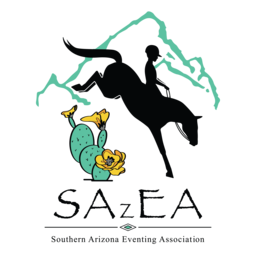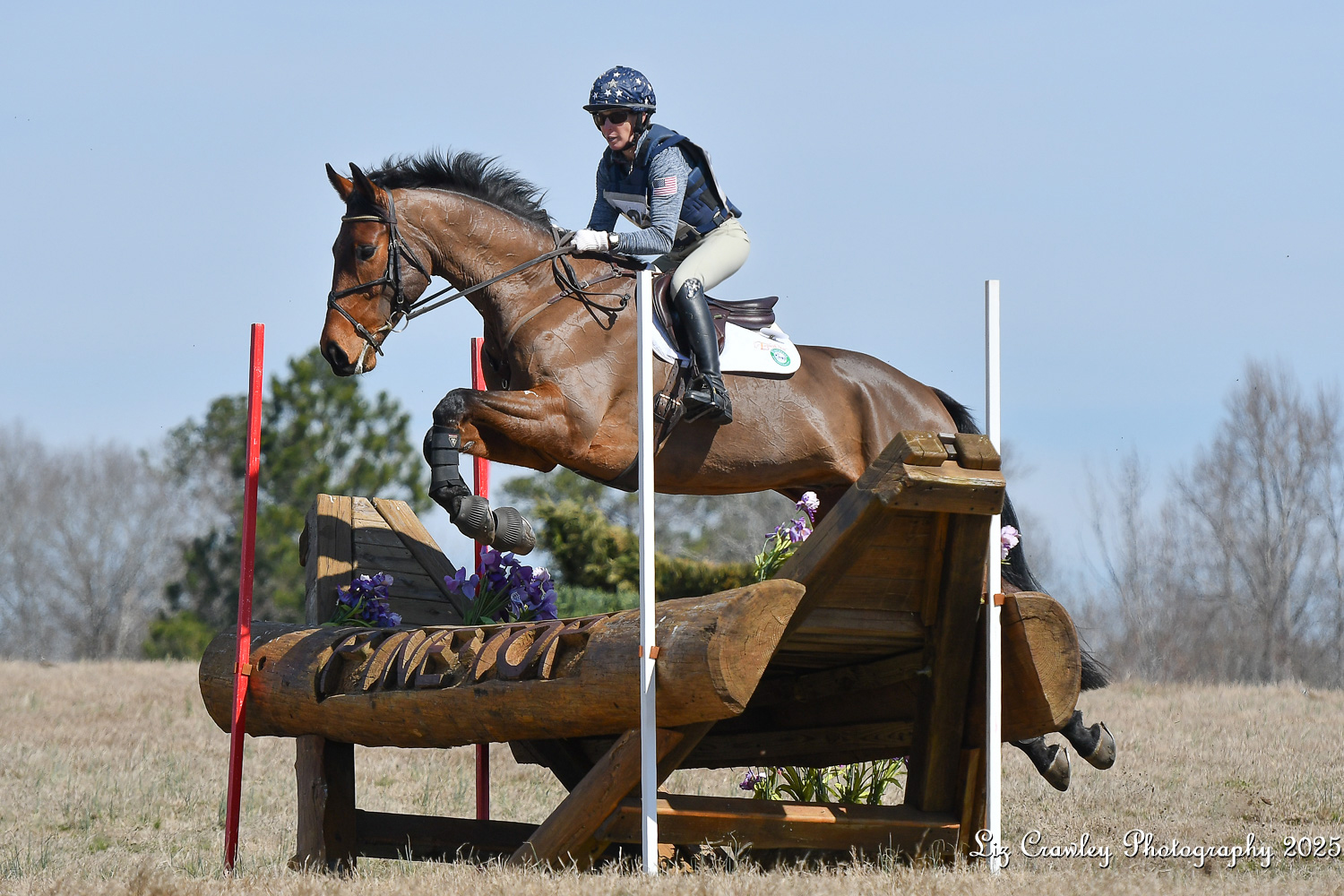
Photo by Anna Purdy.
Horses have no shortage of ways to communicate with us. For the most part, we can tell when they hurt and what hurts, we can tell if they are content, anxious, hungry, thirsty, excited, itchy, hot, cold, how they like to be groomed, and if they need to pee. We, however, have a much more difficult time communicating things to our horse.
While we tend to put too many human traits on our horses, we can sometimes use our knowledge of emotions to better relate to them (as long as we don’t take it too far). To do this, we need to have control and insight into our emotions, our reactions to our emotions, and control and awareness of what our body is doing, why it is doing things, and when it is doing it. It all boils down to our body language, which, in the saddle, is our position. Equitation, classically, is functional form, not a competitive discipline. And it does matter, no matter the discipline. Equitation is not ONE position, but it is the balancing of the spine on top of the horse, who just happens to be in motion. Simple, right?
As adults, this can be a mind boggling concept. I can’t tell you how often people will come for a riding lesson, ready to work on more advanced moves and practice jumping courses, and we spend two weeks working on posting the trot and how to look where they’re going. Ah, riding is a humbling sport indeed.
And so I compiled a list of the Top 10 most humbling, most obvious things about our riding position that makes them no easier to fix, but there is comfort in solidarity.
1. A steady leg is a loose leg. Say what?! Right. The horse is in constant motion. In order to appear still, the rider is actually moving quite a bit, and fluidly. The leg is relaxed and soft. If your leg is braced and locked, it will swing like crazy. If you stay still while the horse is moving, well, what do you think might happen? Furthermore, you don’t hold yourself on the horse with your legs. Frequently someone will say to us, “Oh you must have really strong thighs.” Eh, not really. I spend my whole day trying to use my legs only when I have something to say to the horse, so that they can hear me. If you squeeze all the time, they’ll tune you out like white noise. Your horse is not a ThighMaster.
Tip: Start out at the walk, and let your legs hang down at your sides with not stirrups, completely limp. Notice what happens to your horse. Does he slow down? That’s a sign that your legs may be “talking” more than you’d like.
2. Holding the reins will not save you from losing your balance. Let’s think about it. The reins are a thin piece of leather attached to a piece of metal (or the like) in your horse’s mouth. OR attached to something across their nose (which, fyi, is rather sensitive on a horse). In contrast, the saddle is a much larger, much more stable, piece of equipment. But we humans tend to pull on the reins, pop our butts in the air, and curl into the fetal position. Literally the opposite of what would actually be needed to stay in the saddle. When you’re using the reins to salvage your balance, you’re pretty much hanging by a thread, not to mention interfering with the horse.
Tip: Ditch the contact, put a big ol’ loop in the reins, ride with one hand, ride with no hands, take some lunge lessons, or ride with champagne glasses in each hand. #itworks
3. Your eyes are arguably one of the most important pieces of your position. We know it, but we just don’t always take it as seriously as we should. We either focus on the wrong thing, or we just don’t focus at all, or somewhere in between. Imagine playing tennis and not watching the ball, or driving without watching the road. Furthermore, whilst in the saddle, you are the driver, and thereby responsible for steering, and your eyes play a big part of this.
Tip: The next time you’re driving, or taking a walk, practice drawing an imaginary line with your eyes as you travel, and then take that to your next ride.
4. You should breathe. So simple, right? So why do we forget? Breathing makes a huge difference in your position and in your horse. Constricted breathing can read as anxiety to your body, and next thing you know, you’re riding scared and you don’t know why. Your horse will match your breath, in mind and body. Your body will match your breathing. It’s magical AND science.
Tip: Designate “breathe” markers around your ring, field, or course. When you see that particular tree or fence board, take a deep breath in AND (here’s the kicker) let it out. Additionally, practice taking a breath and letting it out slowly as you approach your fences and canter transitions.
5. Heels down, but wait, not that far! Do you ever start your ride by shifting back in the saddle and pushing your heels down and in front of you? Some riders do this without conscious thought, and it’s a habit worth noting, and stopping. Early in most of our riding careers, heels down was like THE goal. It was repeated and hollered and we’d even see that one rider with their heels down SO far and try to emulate that and make our coaches so happy. The result? A whole lot of braced legs and tight hips. It’s not that our heels shouldn’t be down, but it’s not all about the heels. It’s actually all about the hips. Weird, right? Our heels should only go down because our leg is so relaxed (see #1) that the heel naturally falls beneath our toes. Pushing the heels down creates tension and swings the stirrup like a pendulum in front of the body, hindering the ability to move forward with the horse, making using the actual leg difficult, and also removes the shock absorption function of the ankles. If the ankle is at the end of your flexion, it can’t take up the motion of the horse.
Tip: Start at a standstill, with the ball of your foot placed evenly on the stirrup bar, open your legs off the saddle and draw slow circles with your heels, keeping even pressure on the stirrup, and keeping the stirrup steady. A buddy on the ground with a phone can be helpful here. Relax, and move into the walk and trot, and canter if you’re comfortable, and have that friend video your feet and legs. If you have the tendency to brace, actually pull your heels up to be level with your toes, and slightly back. It’s the weirdest thing in the world to hear “heels up!” in a lesson, but it may be just what you need.
6. Up, down, up down. The reason posting is taught with a coach saying, “Up! Down. Up! Down.” ad nauseum until they have dry mouth is to help with the rhythm of the rider, to match the horse’s trot. This is frequently done at first by said coach running alongside the horse and rider, before progressing to the lunge line (if you’re lucky). What’s the problem with this, you ask? Well, you’re not actually supposed to go up and down with your post, but forward-up and back-down. It’s just not as easy to say quickly and still have time to breathe. But if the horse is trotting forward, and the rider is simply standing up and sitting down, they cannot keep up with the motion of the horse, and posting becomes difficult for the horse and the rider, when the point is to make the whole thing easier! As you rise in the post, the hips should tuck slightly and swing forward (think over the knees without pinching!), and on the way down, swing back to lightly touch the saddle just in front of the seat bones. In essence, in a jump saddle, posting is two-point, light three-point, two-point, light three-point.
Tip: The old Stand-Stand-Sit exercise. If you are correctly in the center of gravity, with your foot in the right place, with swinging hips, this exercise is very easy. (cue side-eye) In rhythm with the trot, you are going to be constantly changing your diagonal but during the “Up” phase of the post, rather than the sit. If this is a struggle, hold on to a neck strap or breastplate to assist you, and sound out or count to help (I like, “stand, stand, sit” but 1,2,3 or the like works just as well.) Your body will begin to take over, finding a better center, as you keep this rhythm up!
7. When in doubt, go forward! Fear is powerful, but it lies to us. When we think of anything a horse can do that is “scary” or “dangerous”, it is always “backwards” in behavior. Our inclination is to “stop” them from displaying a behavior. This usually results in shortening up on the reins (see #2). Sometimes we do this during the situation, or we do it to prevent a situation. And so then, we usually exacerbate a situation or actually cause it to come to fruition, because what the horse needs is to be sent forward.
Now obviously, there are a lot of training issues associated with behavior, but that’s not exactly what I’m referring to, as we are focusing on rider position. What I am referring to is the rider’s expectations and fears, and that the rider must learn to be comfortable riding forward to prevent many of these problems in the first place, and this comfort level is based in our position.
Tip: Most of our fears come from a lack of balance, or being unsure of our balance (some people have the ability to have good balance and don’t necessarily trust it). I could add a whole lot of tips here, but as a quick tip, a neck strap can be an amazing confidence builder for you and your horse. And exercising (such as Pilates) off the horse are integral. And have a trainer.
8. The horse is jumping, and you don’t … have to help them get up and over. Have you ever been guilty of jumping ahead of your horse? Ahem, me neither. The fact is, we are visual creatures, and so we lean. We lunge. We stand. We watch other riders and we watch their top halves (I was going to say front ends but I forget that humans have different parts…). We should be watching their hips. As we approach a jump, our upper bodies should rise up, and as the horse takes off, our hips slide back and our knees bend. As the horse descends, our upper body stays tall and our hips tuck forward over our knees. The rider should think more of a squat and less of a mermaid at the front of a boat.
Tip: Drop your stirrups and grab your neck strap, and trot or canter some small crossrails, allowing your seat to stay in the saddle with your legs relaxed even over the fence. This allows the motion of the horse to rock the hips correctly.

You know those mermaids on the front of boats? Don’t be one over your fences.
9. When giving conflicting aids, the horse ALWAYS chooses the one you don’t want, and if our aids are not independent, we are always giving conflicting aids. Independent aids means each body part works without another interfering. Can you move your right leg without your left, can you squeeze your calves without tightening your seat or arms, can you turn your head without leaning, can you move your right arm while looking left, do you lean in and make a face when you put mascara on in the mirror? People don’t tend to naturally have super independent body parts, but adults have movement patterns that are that much more ingrained for good or for ill. The great thing about riding is that, done properly, can truly change your body and make you stronger and healthier in your daily life. The sucky thing about riding is that it’s actually pretty easy to do it improperly, thereby exacerbating poor posture and causing pains where pains should not be. #stillhumbling
Tip: Exercising off the horse is vital, and yoga and pilates classes will be extremely helpful.

Photo by Anna Purdy.
10. Controlling our emotions is an important part of our position. The learning process can be frustrating, especially the more humbling it is. While we need to focus on ourselves as the rider, we cannot forget that we are dealing with a live animal, and they do not know what our frustration means. Picture this: a horse and rider are approaching a fence. The rider pulls the reins through the turn, disrupting the balance and rhythm, thereby taking the horse’s stride away. The pair is a bit too slow, the horse chips in but makes a great effort over the fence, clears it, and canters away. The rider, frustrated at themselves, growls and pulls up, maybe determined to try again but forgetting to praise the horse for saving the day. This happens all the time, and we are all guilty at one time or another. It can happen in canter transitions, trot work, lateral work, anywhere. What we see is an increasing anxiety in the horse, in response to the rider. Horses are flight animals, and they cannot differentiate between the rider’s frustration or fear, and we all know horses respond to fear with … fear!
Tip: Learn to laugh at yourself, leave the ego aside, and accept that you’ll never do anything perfectly all the time, or basically ever on a horse. And when I say laugh, I really mean it. I have trained myself to actually let out a laugh when I make a mistake, and always thank my horse.
The stages of learning something new are: unconscious incompetence (you don’t know that you don’t know), conscious incompetence (now you know that you don’t know), conscious competence (you know, but you have to think about it and work at it), unconscious competence (you no longer need to think about it to do it properly). Everyone goes through these stages to learn anything, but most people get stuck on conscious incompetence, because we just don’t tend to like the way that feels. But if we keep at it, we will reach the further stages, and look back wondering why it was so difficult.
The Position Matters Clinic is designed to break down position into digestible information, rather than trying to do everything all at once. It’s a fun environment, designed to allow questions and discovery of what your body and brain need at all stages, across disciplines. Join us in this unique clinic, where all well-trained school horses are provided and participants spend one whole hour learning unmounted exercises and revealing potential blind spots in their bodies, and another hour mounted in small group instruction.
Click here for more information and to register via Event Clinics!






































